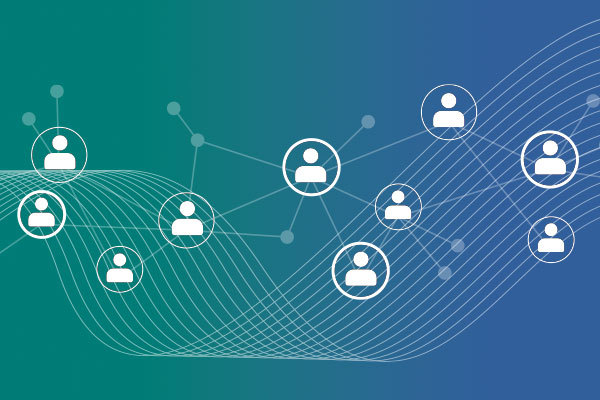Guest Blog: Three Focus Areas to Get Your Specialty Chemical Distribution Business Back Up to Speed
By Steve Laborda
Aug 06, 2020
Chemicals are present in almost every product we all use daily. Specialty chemicals distributors have not been spared from the fallout of COVID-19, and thus the impact on the global economy is tremendous. The pandemic is top of mind in the chemicals industry, as players throughout the value chain try to anticipate what is going to happen next.
While most companies have been hit hard by drops in demand, some are actually seeing positive impacts during this time. Yet even in booming markets there are significant delivery challenges from a production capacity and supply-chain perspective. In short, chemical distributors are in a state of flux and are looking hard at new ways to be efficient without sacrificing value-add.
COVID-19 has shown us how important digital enablement is in all that we do in the B2B world. I would like to demystify digital a little bit. From my perspective, the adoption of better digital tools is necessary, but it is not the answer to every challenge that specialty chemical manufacturers and distributors face.
Digital will not help to solve all your problems if you do not have your commercial basics in place. In this blog, I am going to focus on some of those basics, since I see that too often company leaders jump on digital as the magic elixir for every problem. Companies tend to waste tremendous resources, budget and time when they eschew the basics in favor of a hasty technological fix.
In many cases, the distributor is seen as a simple logistics company - is this true?
Perhaps a few decades ago distributors were seen as simple logistic companies for the manufacturer, but now many are extending their business to offer more value-added services, expanding into formulation technologies or even manufacturing some chemical goods. This has driven growth, but brought some downside at the same time, since they are now competing along the value chain with their suppliers in addition to their peers in distribution. This situation brings new challenges and complexities that demand an earnest rethinking of commercial and operational development.
What are those commercial challenges and what could be an answer to them?
As specialty chemicals companies have been struggling with drops in demand or plant shutdowns, leading to lower revenue and profitability, the current crisis has stressed even more the three main challenges along the value chain:
Customer/product portfolio Impact of costs and pricing Understanding customer needs in scattered marketsCUSTOMER & PRODUCT PORTFOLIO
The complexity of the product and service portfolio ranges from simple basic chemicals to tailored offerings to complex formulations. Distributors in the value chain have to continually adapt to discrete new products coming from hundreds or thousands of manufacturers/suppliers. The complexity of the customer base can lead to overwhelmed and unfocused sales teams, and in turn, leakages in opportunities or profitability. Those leakages need to be controlled and turned into proactive hunting. Sales teams often lack a clear view of which customers to focus on and what products to sell. Therefore, a clear customer segmentation strategy, as well as precise product portfolio management, must be enabled.
COST & PRICING IMPACT
In each step of the value chain, various elements of cost, pricing and value-added services need to be honed and developed. Challenges may vary in the different steps of the value chain, but the common thread is the negative impact on profitable growth. As mentioned above, distributors have incorporated additional capabilities into their traditional offerings. Done right, these services create market differentiation, but each new service pillar also creates complexity. To achieve profitable growth across the portfolio, some focus areas such as optimized price setting, intelligent price guidance and automated approval processes need to be rolled out. A structured approach to pricing will provide clear guidance to your teams in the field and increased control over the profitability of your company.
UNDERSTANDING CUSTOMER NEEDS
For distributors, it is challenging to understand the specific needs of customers, especially for distributors that serve a large number of customers in multiple market segments. To be successful there is a clear link between customer segmentation and the effort you place to better understand your customer’s needs. You can’t attend every wedding, so to speak, so you need to focus on the most important ones. How to define where the most impactful opportunities lie comes down to the granularity of your customer segmentation development. Some important parameters can include current turnover, potential growth, buying behaviors, complexity, size and geography. Once your sales organization has a clear understanding of which customers to focus on, it will need a structured approach to gather customer insights to best understand these customers, their potential needs and, finally, the potential value to be created and captured.
CONCLUSION & KEY TAKEAWAY
As already observed in the value chain, the drivers around costs, pricing and differentiation need to be well managed and constantly developed to avoid leakages around revenue, growth and profitability. Those drivers or challenges have not suddenly emerged during the COVID-19 pandemic but have been stressed and accelerated because of it. The question now is how to close the gaps created as this crisis unfolds and at the same time make your business more robust and sustainable for the future.
Ultimately, it boils down to enabling your commercial organizations to work actively and efficiently, so that they are consistently making better pricing and sales decisions. Mastering the basics – the functional processes – paves the way for adoption of powerful digital tools that will take your distribution business to the next level.
Here are my three points to keep in mind to ensure success:
Reduce complexity across customer and product portfolios. Don’t leave money on the table. Employ structured and intelligent pricing. Make sure you understand your most important customers very well.About the author:
Dr. Steve Laborda
INSPIRING | MOTIVATION | CHALLENGING
CEO VALUEBIZBOOSTER
Contact Zilliant to learn more about intelligent pricing and sales strategies.



